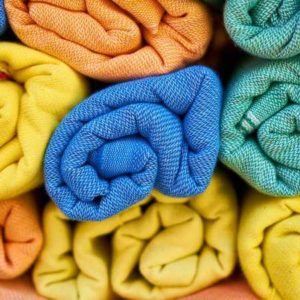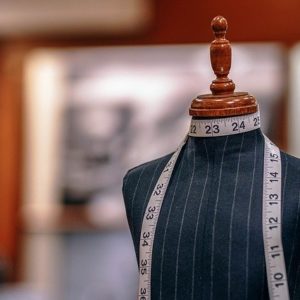In today’s fashion landscape, there’s a revolutionary concept gaining momentum – Circular Fashion. This exciting approach aims to reduce waste, conserve resources, and minimize pollution by rethinking how we design, produce, and consume clothing. In this article, we’ll delve into the world of Circular Fashion, explore its core principles, characteristics, examples, and ways for both fashion brands and savvy consumers to get involved.
What Is Circular Fashion?
Circular fashion is all about minimizing waste and maximizing the use of our planet’s precious resources. It’s a design philosophy that encourages clothing and textiles to have a longer life, reduce waste through recycling, and embrace renewable energy sources in production. The fundamental principles of Circular Fashion include designing for durability, using eco-friendly materials, reducing waste through recycling, and adopting renewable energy sources during production.
Why Circular Fashion Matters?
Imagine a world where the price of clothing accurately reflects its true environmental and social costs. Circular Fashion aligns perfectly with the goals of environmental organizations and tree-planting initiatives. By embracing Circular Fashion principles, the fashion industry can drastically reduce its ecological footprint and contribute to a greener future.
Key Characteristics of Circular Fashion
Circular Fashion stands out from traditional fashion practices in several ways:
- Circular Design: The design process plays a pivotal role in Circular Fashion. It determines how long clothing lasts and whether it can be easily repaired, reused, or recycled.
- Circular Resources: Circular Fashion promotes the use of renewable and biodegradable materials while incorporating recycled materials into production.
- Circular Business Models: Innovative business models prioritize product longevity, reuse, and repair. Think rental services, resale platforms, and clothing repair services.
- Circular Flow: Garments are designed to circulate within the system, promoting easy disassembly and component reuse or recycling. This closes the loop in the fashion supply chain.
Real-World Examples of Circular Fashion
Circular Fashion isn’t just a concept; it’s a reality with various initiatives:
- Rental services allow customers to borrow clothes, reducing the need to buy new.
- Resale platforms facilitate buying and selling preloved fashion items.
- Clothing repair and alteration services extend the lifespan of garments.
- Clothing recycling programs repurpose old clothes into new products.
- Upcycled materials transform discarded or surplus materials into new fashion pieces.
Some brands also design clothing meant to last and be easily repaired, encouraging consumers to invest in quality, long-lasting pieces.
Challenges in Embracing Circularity in Fashion
Despite its promise, implementing Circular Fashion faces hurdles:
- Second-Hand Misunderstanding: Consumers may not fully grasp the value of second-hand clothing, leading to lower demand.
- Ineffective Business Models: The traditional linear fashion model needs replacing with circular models focusing on reuse and recycling.
- Technology Gaps: Circular fashion requires advanced technology for transforming clothing into new materials, a hurdle for many.
- Cultural Barriers: A lack of customer awareness and business culture within linear systems can hinder adoption.
- Consumer Behavior: Consumers may be hesitant to pay more for sustainable fashion, and awareness may be lacking.
- Data and Expertise: Insufficient data and expertise in Circular Fashion can make it challenging for businesses to implement.
Overcoming Circular Fashion Challenges
Brands can overcome these challenges by:
- Developing Circular Business Models: Prioritizing reuse and recycling, offering repair services, and using sustainable materials.
- Educating Consumers: Raising awareness about circular fashion’s value through marketing and in-store initiatives.
- Investing in Technology: Developing recycling tech and blockchain supply chain tracking.
- Collaborating with Others: Sharing knowledge and resources with other brands.
- Offering Incentives: Rewarding consumers for participating in circular fashion.
- Collecting Data: Gathering data to better understand consumer behavior.
How Consumers Can Join the Circular Fashion Movement
As a consumer, you can contribute to Circular Fashion in these ways:
- Shop Second-Hand: Explore thrift stores and online marketplaces for second-hand fashion gems.
- Rent Clothes: Try renting outfits for special occasions or everyday wear.
- Repair and Alter: Extend the life of your clothing by repairing or modifying them.
- Recycle Clothes: Donate or repurpose your old clothes.
- Choose Sustainable Materials: Opt for clothing made from eco-friendly materials.
- Support Circular Brands: Back brands that prioritize sustainability and circularity in their operations.
In Conclusion
Circular Fashion is more than a trend; it’s a sustainable style revolution. By embracing its principles and practices, both consumers and fashion brands can work together to create a brighter, more eco-friendly future for the fashion industry. Start your Circular Fashion journey today and be part of the change towards a greener wardrobe and planet.







